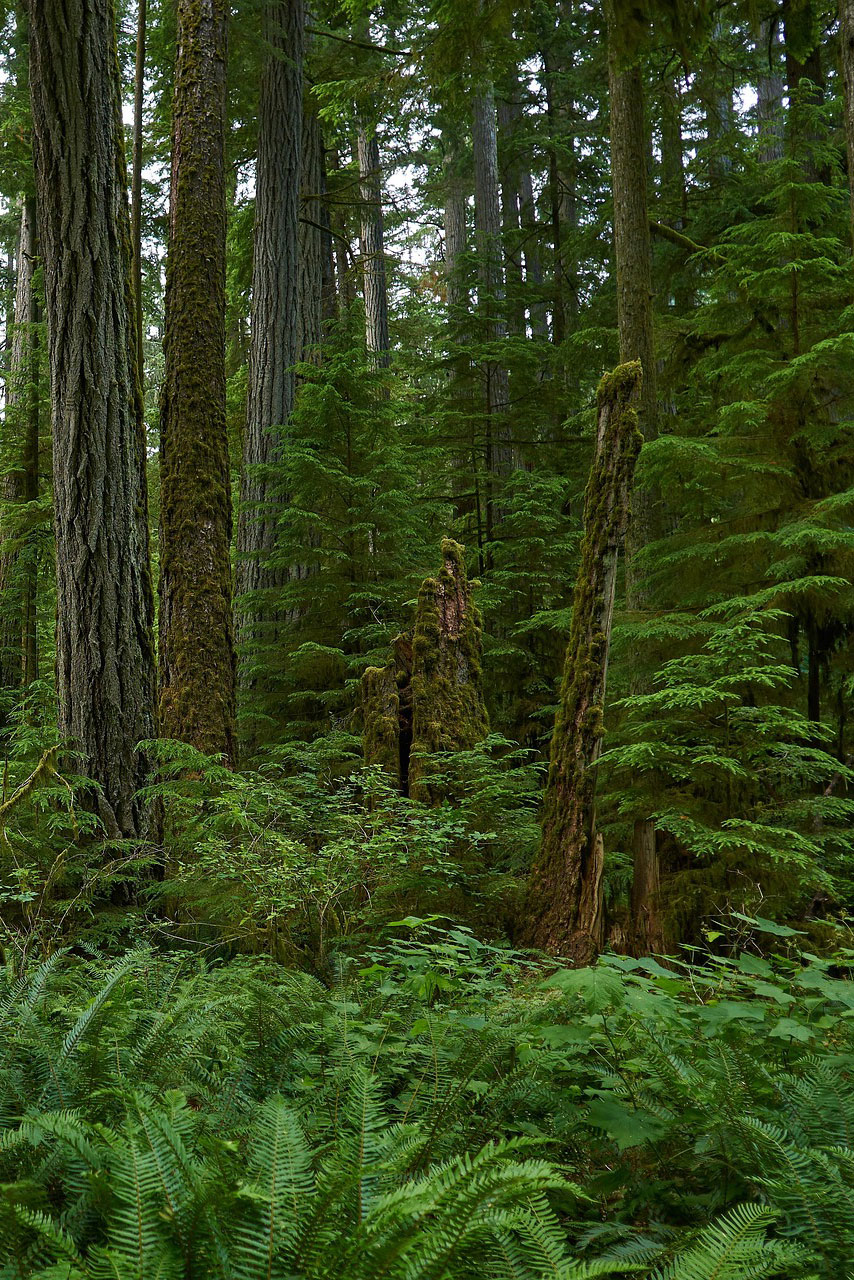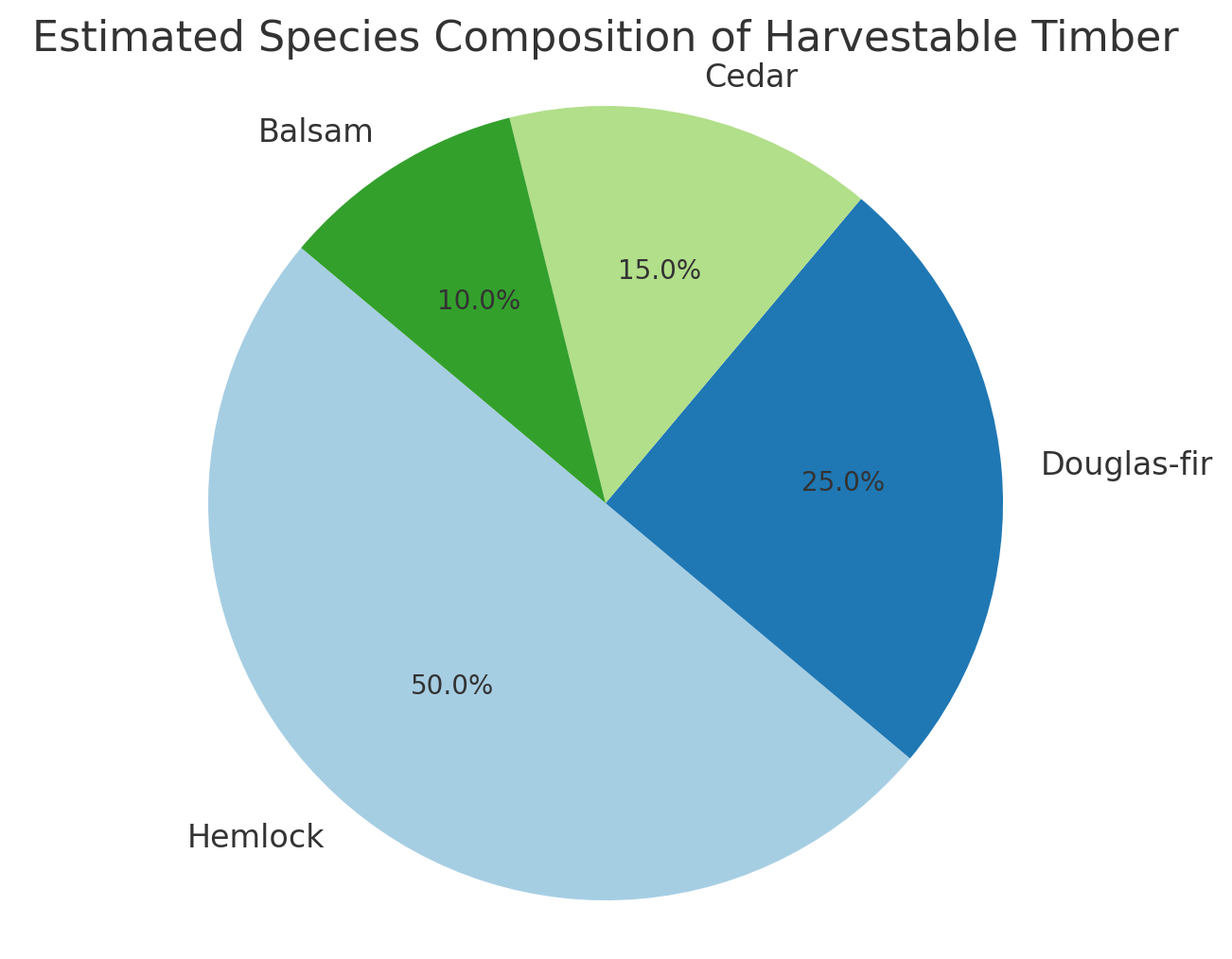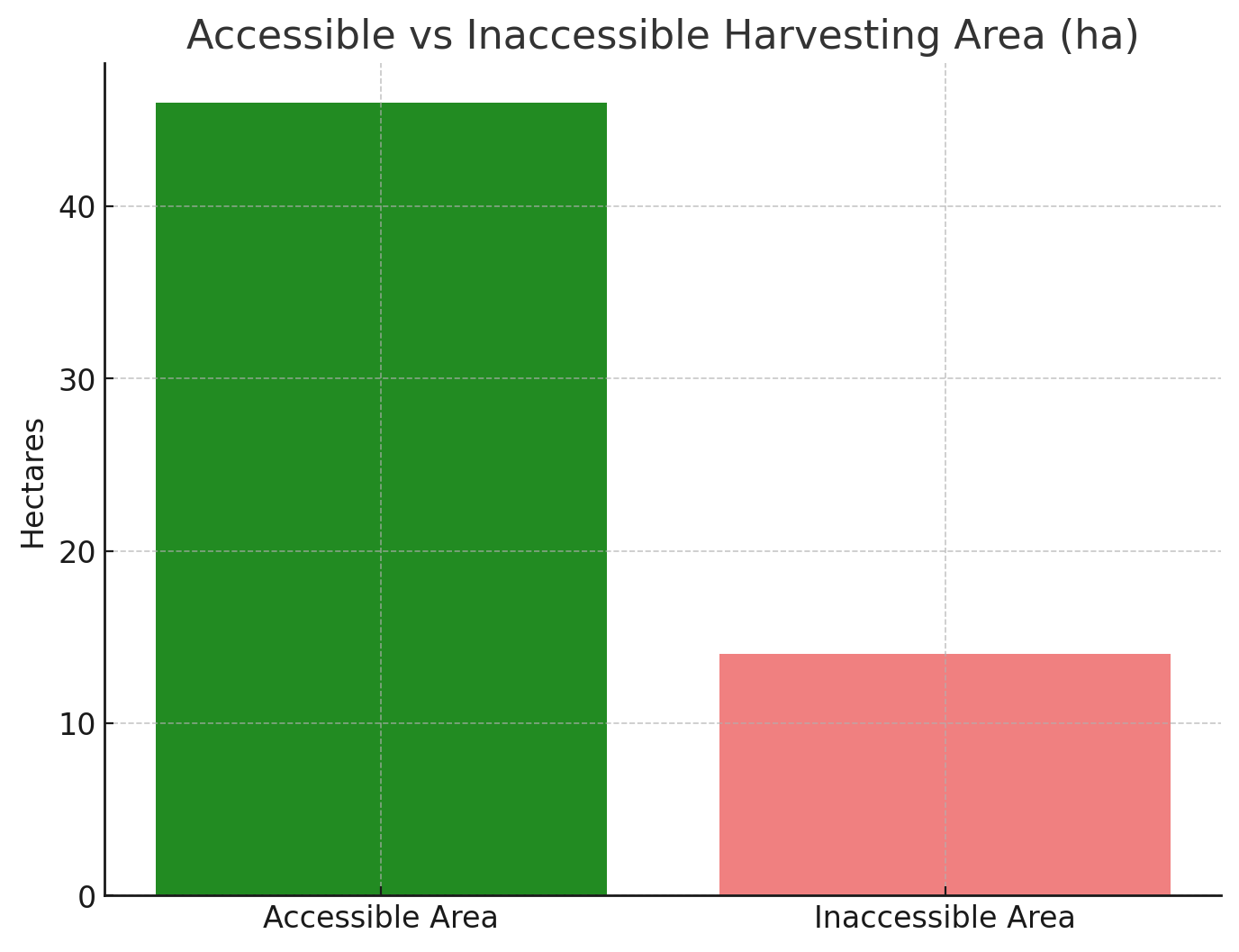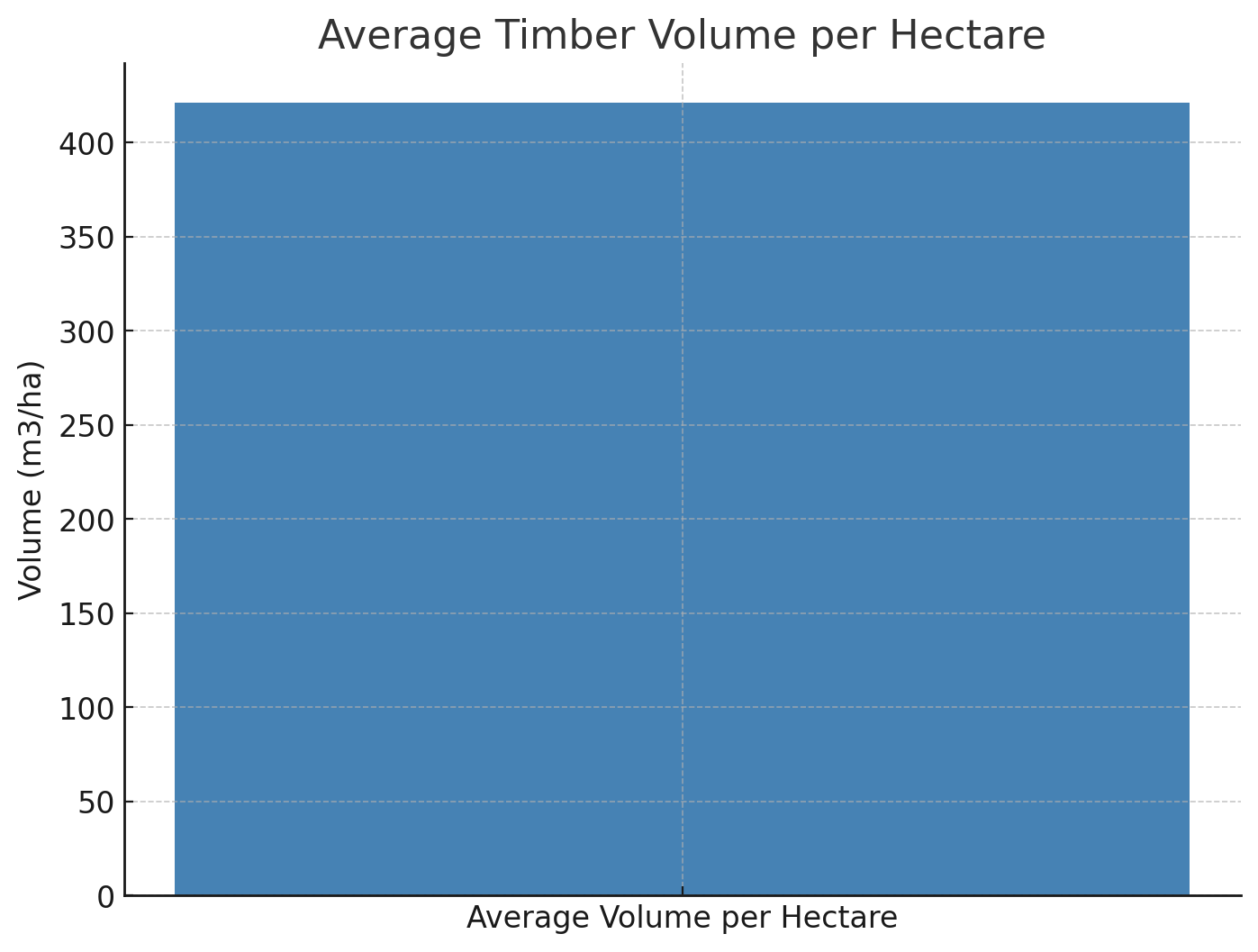Timber Inventory

Manitou Creek Timber Inventory
Estimated total harvestable volume is 24,400 m3
Hemlock is the leading species, followed by Douglas-fir, Cedar and Balsam. Average volume per hectare for the accessible volume is 421m3/ha. By our estimations, 46 hectares of the 60 hectares is accessible to harvest.
HARVESTABLE TIMBER ASSESSMENT REPORT MANITOU CREEK PROPERTY — DEAN CHANNEL
Summary
An initial assessment of the timber resources on the Manitou Creek property has been completed. Using official Ministry of Forest Inventory data, maps, and aerial photography, we have developed a preliminary estimate of the timber volume and harvest potential. While this is an estimate based on remote analysis and limited ground sampling, it provides a valuable starting point for evaluating the property’s forestry potential.
Methodology:
- The property boundaries were overlaid onto the Ministry of Forest Inventory database.
- Volume estimates are derived from aerial photo interpretation with limited ground truthing.
- 13 distinct timber types were identified on the property, each with varying species composition and volume.
- Areas deemed too steep or environmentally sensitive were excluded based on topographic maps and orthophotos.
- A 30-meter no-harvest buffer was established along both sides of Manitou Creek to protect riparian zones.
Key Findings:
- Total Estimated Harvestable Volume: 24,400 m³
- Primary Species Composition:
- Hemlock (dominant species)
- Douglas-fir
- Western Red Cedar
- Balsam
- Average Volume per Hectare (accessible area): 421 m³/ha
- Harvestable Area: 46 hectares out of 60 total hectares
Recommendations:
To refine these estimates and understand potential returns, a detailed timber cruise is recommended. Additionally, quotes from local logging contractors should be obtained to accurately project harvest and transport costs.
CONTACT
BUSINESS PLAN FOR TIMBER HARVESTING MANITOU CREEK PROPERTY — DEAN CHANNEL
Objective:
Develop a sustainable and profitable timber harvesting operation for the Manitou Creek property, capitalizing on its 24,400 m³ of accessible timber while adhering to environmental regulations and best practices.
Market Opportunity:
- High demand for Hemlock, Douglas-fir, and Western Red Cedar in domestic and export markets.
- Coastal BC timber commands premium prices, depending on quality and grade.
- Opportunities to supply local mills or export through established channels.
Operational Plan:
- Detailed Timber Cruise:
- Engage forestry consultants to assess timber volume, grade, and operability.
- Identify high-value stands for phased harvesting.
- Harvest Planning & Permits:
- Obtain necessary cutting permits and environmental approvals.
- Prepare a Forest Stewardship Plan ensuring compliance with provincial regulations.
- Logging Operations:
- Contract experienced local logging crews with coastal expertise.
- Use environmentally sensitive methods for harvesting, focusing on selective logging to minimize impact.
- Implement safety protocols for steep terrain operations.
- Log Transportation:
- Develop access plans for barging and booming operations.
- Partner with marine transport providers to move logs to market.
- Sales & Distribution:
- Establish agreements with buyers (mills, brokers, or exporters).
- Prioritize high-grade timber for export markets.
- Explore value-added options (e.g., custom milling).
Financial Overview:
- Revenue Potential: Significant, depending on log grades and market conditions.
- Cost Considerations: Logging, barging, booming, contractor availability, and site logistics.
- Profitability: Dependent on maximizing log value and managing operational expenses.
Timeline:
- Phase 1 (3-6 months): Timber cruise, harvest planning, permitting.
- Phase 2 (6-12 months): Harvesting and transportation.
- Phase 3 (12-18 months): Sales completion and site restoration.
Risk Mitigation:
- Conduct detailed site assessments to reduce unforeseen costs.
- Secure fixed-price contracts where possible.
- Maintain environmental compliance to avoid fines and delays.
Conclusion:
Harvesting the timber from the Manitou Creek property represents a significant economic opportunity. By following a structured business plan with professional assessments and experienced contractors, this project can be both profitable and environmentally responsible.
Caveat
The estimates, projections, and assumptions presented in this business plan are based on preliminary timber inventory data derived from photo interpretation and limited ground sampling. As such, the figures regarding timber volume, species composition, and harvestable area are considered approximate and subject to change upon further detailed field assessments.
Several key variables—such as timber quality (grade), accessibility, harvesting costs, transportation logistics, market conditions, and regulatory requirements—remain uncertain at this stage. These factors can significantly affect both the feasibility and profitability of timber harvesting operations.
This business plan should be considered a conceptual framework, not a definitive economic forecast. It is highly recommended that a comprehensive timber cruise, detailed site assessments, and consultations with qualified forestry professionals be conducted before making any financial commitments or operational decisions.
Neither the authors of this plan nor its contributors accept liability for financial losses, operational setbacks, or other consequences arising from reliance on these preliminary estimates.

The estimated species distribution of harvestable timber (Hemlock, Douglas-fir, Cedar, and Balsam).

The proportion of the property that is accessible versus inaccessible for logging activities.

The estimated average timber volume per hectare in the accessible area.